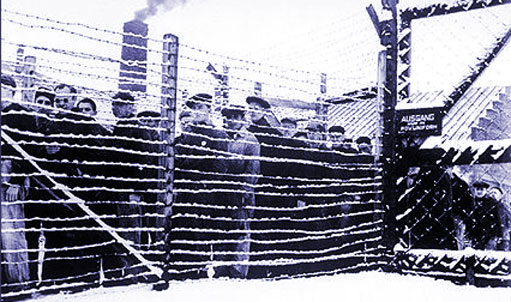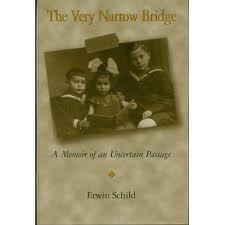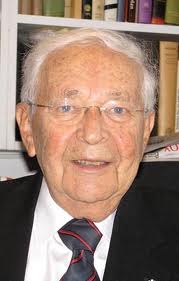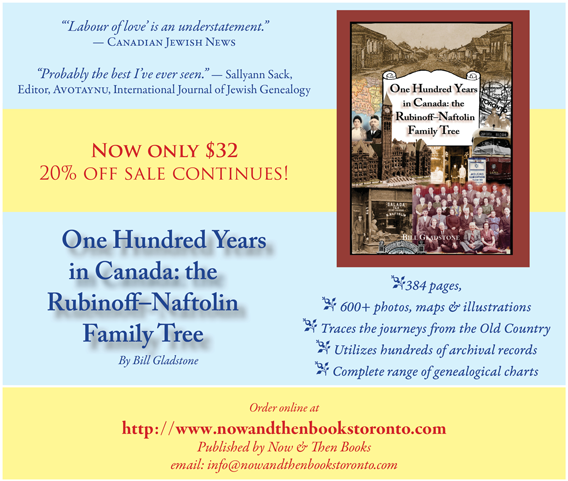 From Books in Canada, 2002
From Books in Canada, 2002
One evening some months ago, a crowd of about 600 people gathered in Toronto’s Adath Israel Synagogue for the launch of Rabbi Erwin Schild’s latest book, The Very Narrow Bridge: A Memoir of an Uncertain Passage. The hall in the synagogue was packed (standing room only) as the rabbi delivered a short talk, and a fond horde queued up afterwards to buy copies of his book and have them autographed. For a moment I pitied the poor Rabbi’s cramped writing hand — until I realized what a thrill it must be for him to sign what amounted to 300 purchased copies of his book in a night! In my years of writing on literary matters for various Jewish and mainstream publications, I don’t think I’d encountered quite the same exuberant rush for a new title.
 Although the free refreshments must have injected a spirit of generosity into the crowd, much more significant was the great esteem in which Schild is held by his congregation and far beyond, even to his native Germany, where he is a popular lecturer. A Holocaust survivor who was interned briefly at Dachau, he came to England in 1939 and Canada in 1940, only to be interned here briefly in a refugee camp; he joined Adath Israel in 1947, served as its rabbi for 43 years, and remains its rabbi emeritus. Long involved with Christian-Jewish dialogue, Schild is the author of Window on the World a previous book of philosophical and spiritual essays that has helped bridge the gap between the Jewish and Christian solitudes. But many of his congregants must have understood that, with this deeply personal account of his early years, he now seemed to be negotiating a very different type of bridge.
Although the free refreshments must have injected a spirit of generosity into the crowd, much more significant was the great esteem in which Schild is held by his congregation and far beyond, even to his native Germany, where he is a popular lecturer. A Holocaust survivor who was interned briefly at Dachau, he came to England in 1939 and Canada in 1940, only to be interned here briefly in a refugee camp; he joined Adath Israel in 1947, served as its rabbi for 43 years, and remains its rabbi emeritus. Long involved with Christian-Jewish dialogue, Schild is the author of Window on the World a previous book of philosophical and spiritual essays that has helped bridge the gap between the Jewish and Christian solitudes. But many of his congregants must have understood that, with this deeply personal account of his early years, he now seemed to be negotiating a very different type of bridge.
 The book’s title comes from an unforgettable observation of the 18th-century sage-mystic Rabbi Nachman of Bratslav that “the whole world is but a very narrow bridge.” The proverb proved painfully true for European Jews of Schild’s generation; among much else, his book is a sort of literary cemetery, a bibliographic monument for many relatives, friends and acquaintances who did not make it across the bridge to life and freedom. But as Schild pointed out at the launch, he does not consider the book as exclusively a Holocaust memoir, since it is more concerned with life than with death. “I’ve written a book that is anything but sad,” he said. “It’s a cheerful book.”
The book’s title comes from an unforgettable observation of the 18th-century sage-mystic Rabbi Nachman of Bratslav that “the whole world is but a very narrow bridge.” The proverb proved painfully true for European Jews of Schild’s generation; among much else, his book is a sort of literary cemetery, a bibliographic monument for many relatives, friends and acquaintances who did not make it across the bridge to life and freedom. But as Schild pointed out at the launch, he does not consider the book as exclusively a Holocaust memoir, since it is more concerned with life than with death. “I’ve written a book that is anything but sad,” he said. “It’s a cheerful book.”
Indeed, it might better be described as a sort of before-and-after portrait gallery in which sections of sustained reminiscence of the increasingly dark 1930s and early 1940s are juxtaposed with italicized observations made decades later from the retrospective safety of Canada. In his travels in Canada, Germany, Israel and elsewhere, Schild has encountered numerous people he knew in his previous life. The italics give the book something of a disjointed, dreamlike quality as he attempts to bridge present and past, and update us on how fate has dealt with his various associates. Sometimes the contrasts are pressed even closer together, such as when the author concludes his description of the happy “golden” years of the late 1920s. “I still feel very sad when I recall my beaming father and happy mother and contrast that image with the one that later events forced me to visualize: my poor parents reduced to slaves, to helpless victims of a fate that robbed them of dignity, of happiness, and, eventually, of life itself.”
It is important to bear in mind that The Very Narrow Bridge is a memoir and not a Holocaust diary: it was written with the benefit of decades of hindsight and reflection. This is a key distinction between this book and the other, Hanna’s Diary, which is discussed below.
Scholars assert that from a historical perspective, the most valuable first-person accounts of the European cataclysm are those that were written during or very soon after the events described. Consider, for instance, the immediacy of Victor Klemperer’s two volumes of Dresden diaries, I Will Bear Witness, which, written contemporaneously, delineate in excruciatingly vivid detail his daily experiences as a Jew in prewar and wartime Germany. Generally speaking, time has somewhat diluted the historical potency of Schild’s pen; as a witness to history, he seems most valuable when recounting his personal experiences at certain pivotal moments such as the abysmal evening of November 9, 1938.
On that evening (the infamous Kristallnacht) German rogues unleashed a destructive wave of violence, torching hundreds of synagogues and vandalizing and looting countless Jewish shops. Schild was then studying in a yeshiva in the town of Wurzburg. The massive wooden entrance to his dormitory building was barred and gated, but still he and other young Jewish occupants, knowing too well the angry mood of the masses, were filled with a prescient sense of foreboding and helplessness as they retired that evening. Around midnight there came a clamour of angry voices as a mob gathered in the narrow street outside, crying for admittance. Banging against the door with their fists, then with a battering ram, they broke down the entrance and rushed inside with a chilling, jubilant roar.
Bedlam ensued. The crash of breaking glass and window panes in the hall ways. The heavy steps of the invaders on the stairs and in the hall. Then the door to our room burst open and a phalanx of shouting devils rushed into the room. “Everybody up! Stand still beside your beds!” The men were carrying axes, hatchets, clubs, shovels, and hammers.
It occurred to the 18-year-old rabbinical student that his life would soon be over, and he was filled with sadness for himself, his parents and his friends. Then came the demonic whirlwind of destructiveness as hammers, axes, hatchets and shovels were applied to the furniture, mirrors, wash basins, even the light bulb overhead.
Beds were overturned; suitcases opened and their contents scattered. A typewriter was heaved through a closed window landing heavily among the clatter of glass in the courtyard below. Windows and mirrors were reduced to shards. But to our growing astonishment and relief, the orgy of destruction passed without the invaders turning on us. The triumphant mob left the scene.
Schild is seemingly given another reprieve from death soon after, when he is deported to Dachau, and released after five weeks on the strength of a seemingly legitimate affidavit promising him a visa to the Dominican Republic. He describes the psychological torment, despair and loss of dignity, but supplies few concrete details of the experience. “Trauma often blots out unbearable memories,” he explains. “My recollections of Dachau are sketchy, with many blanks.”
Another point of historical interest is his detention, along with many other Jewish and non-Jewish immigrants, in refugee camps soon after his arrival in Canada in July 1940. “It became obvious, as our guards escorted us from the ship, that the authorities in charge of our reception were not expecting Jewish refugees from Nazi Germany, but Nazi soldiers and German civilians — in other words, enemies.” Shockingly, the Jewish refugees were herded with a group of German and Italian prisoners of war, as though the Canadian military was unable to grasp the essential distinction between them — no less glaring than between cat and canary. Fortunately, at the internment camp near Trois Rivieres where they spent the next month, a camp officer wisely segregated the two groups. In August they were transferred to another camp near Fredericton, N.B., where they were held for almost a year; then were transferred again to a camp near Montreal.
This should have been a time of triumph for Schild and others refugees in his situation; instead, he was forced to experience a sorry and little-known chapter of our country’s wartime past that, for shamefulness, rivals Canada’s incarceration of citizens of Japanese descent. “Antisemitism,” he writes, “had twisted bureaucratic red tape into a solid chain, barring our entry to Canada.” As far as Jews were concerned, the period would later become known as the “None Is Too Many” era of Canadian immigration; the phrase arose from a casual comment by a government bureaucrat and attained prominence when historians Irving Abella and Harold Troper used it as the title of an award-winning book.
 All in all, The Very Narrow Bridge is a well-told biographical account of considerable historical interest, by an articulate and sympathetic narrator with mature emotions and admirable powers of reasoning. Had Schild attempted the book sixty years ago, while the events were still fresh in his mind, it would likely have been much more of a purely historical document, with far less literary merit. As it stands, it is a realistic account of historical events filtered through the prism of a lifetime of reflection and memory, and lies somewhat more centrally within the literary spectrum; a few passages seem vaguely impressionistic, almost Proustian. “In some contemporary motion pictures, past and present and future crazily intersect . . . ,” he writes.
All in all, The Very Narrow Bridge is a well-told biographical account of considerable historical interest, by an articulate and sympathetic narrator with mature emotions and admirable powers of reasoning. Had Schild attempted the book sixty years ago, while the events were still fresh in his mind, it would likely have been much more of a purely historical document, with far less literary merit. As it stands, it is a realistic account of historical events filtered through the prism of a lifetime of reflection and memory, and lies somewhat more centrally within the literary spectrum; a few passages seem vaguely impressionistic, almost Proustian. “In some contemporary motion pictures, past and present and future crazily intersect . . . ,” he writes.
A kind of time warp bends my childhood memories. I remember a mass of vivid details and vignettes from my early years. I can retrieve places and things: toys, games, books, tools, construction and chemistry sets; I can recall songs and verses, and snatches of stories and fables. But I cannot fit all these items sequentially into the very limited number of years of my life to which they belong!
And he adds, in seeming amazement: “The jigsaw puzzle has too many pieces.” Thus does history meld into myth — both being the proper fodder of literature.
* * *
“If we accept the increasingly popular notion that ‘Holocaust literature has grown into a genre of its own,’ Adolf Hitler would be the first ruler in history to have inspired a new literary genre,” writes Harvard Professor Ruth R. Wisse in The Modern Jewish Canon, her recent, highly incisive analysis of modern Jewish literature.
Wisse alludes to the vast “forest of diaries and memoirs” that have sprung up as the smoke began to clear from the century’s (and history’s) most massive genocide. What has impelled the growth of this genre is the notion almost universally expressed by survivors and witnesses that they are morally obliged to leave a historical record of their experiences. As one wartime diarist, Mark Dworzecki, put it: “We have to write memoirs; each of us has to record what he sees, so that future generations should know it.” Partly as a result of this strong moral impulse, the Holocaust is widely regarded as one of the best-documented events of history.
But stop: Hanna Spencer (nee Fischl), a young unmarried Jewish schoolteacher in prewar Czechoslovakia, began her diary for a very different reason. She felt no urge to be a witness to history, no compulsion to leave a record for later generations of the increasingly barbed slings and arrows aimed at the Jews from local sympathizers of the neighbouring Nazi regime. Instead, she conceived her diary as a sustained letter to her secret lover, Hans Feiertag, a Christian musician whose career would have been jeopardized had his relationship with a Jewish woman become known. After she was separated from Hans, she turned to the diary as a means to “give us a chance to fill in the gap, as it were, later on.” As it happened, Hanna records details of her life during a dramatic period that, sixty years later, would still prove of sufficient popular interest to warrant the diary’s publication.
The reader is acutely aware, upon entering the book, that it is a historical artifact rather than a polished piece of literature. The narrator does not seem especially sympathetic at first and seems blatantly to ignore the needs of the reader — except, of course, the very special reader for whom her words alone were meant. The “hook”, in short, is slow in arriving; in beginning Hanna’s Diary, I thought of Hamlet and Hecuba and the delicate magic of transforming one person’s private world into subject matter of wider literary appeal; for me, the effect of venturing into the first few pages of Hanna’s Diary was not unlike sitting down on a bus next to a complete stranger. Perhaps that’s as it should be: a diary is a private document, after all, and often kept under lock and key; and we who are privileged to open it must understand and respect the basic premise under which it was created.
August 11, 1938: “Again no mail today. I wonder where you are. What can I give you for your birthday?” August 13: “Had a queasy stomach the last two days but am feeling better … The folding chair on which I was sitting collapsed and dumped me into the lilacs.” August 22: “Stayed in my room all yesterday afternoon. Only in the evening, when the others returned, did I go downstairs. The Priesen folk were here; lots of laughter with the Pollaks as always.” These early excerpts are from the sort that made me ask: why should I care? But as soon as the ugly head of war intrudes — Hitler threatens to annex Hanna’s native Sudetenland into Germany — the requisite dramatic structure arrives and transforms the narrator at once into a sympathetic protagonist grappling heroically with gross injustice.
Friday September 23: “What a week! What we are experiencing personally are historic events of global importance. The situation has been changing from hour to hour, each piece of news out of date almost as soon as it is published, with wild rumours running ahead of every event . . . . Dear diary, you see how disjointed and muddled my report is. But right now, in the middle of events, how can I sift the important from the trivial? What is temporary? If I had reported all the waves of fear and hope that I have experienced during the last few days, it would seem like a miracle that I am as calm as I am . . . . ”
Hanna records many unsettling events, such as the loss of her teaching position at a school where she is the only Jewish staff member. “Principal Lachnit informed me today that he had to declare me redundant,” she records on October 26, 1938, and soon thereafter notes that Lachnit has introduced the Hitler salute as the primary form of greeting in the staffroom. Even more painful is the sudden betrayal of her supposed best friend in mid-November:
Erna tried to break it to me tactfully that she cannot reconcile it with her conscience to have a Jewess as her best friend. There has been no change, she assured me, in her feelings towards me. Nor has it anything to do with being afraid or saving face. For that, she said, it was too late . . . . Now I am alone in every sense — not only inside but externally. No more half-measures. I am no longer the exception to whom all those nasty things they say about the Jews don’t apply. Now that my last and only friend has cut me off, I am consumed by an almost morbid curiosity. What is going to happen next?
Soon she is awaiting a permit to work as a domestic in England; it arrives in February 1939. Traveling to England, she notes that “what impressed me most at the point of entry was the attitude of the English customs officers. They actually accepted our word and trusted our honesty (which, it seems to me, bespeaks their own).” Like the author of The Very Narrow Bridge, the narrator of Hanna’s Diary was destined to linger in a sort of purgatory between enslavement under the Nazis and freedom in the West; the interval seems analogous to the forty years of wandering of the Jewish people between the Exodus and their egress into the Promised Land.
As Hitler’s armies march into Czechoslovakia, Hanna records details of her own personal hell in England as the house-slave of a terribly selfish and fussy upper-class matriarch: so bad is this lady’s temper that one is tempted to conclude — certainly falsely — that Hanna, in exchanging the Nazi overlords for this lady, has jumped from the proverbial frying-pan into the fire. “Mrs. A yells and screams, with the result that I get quite flustered and stupid and understand things the wrong way.” Fortunately, she soon finds another job in a much more loving household.
By summer, Hanna’s British interlude is over, and she voyages to the Promised Land of Canada. “The [customs] officer looked at our papers and broke into a smile. He knows Uncle Louis well: ‘Please give him my regards,'” she records; she has downplayed her Jewish roots. She settles in Prescott, Ont., and begins a pre-arranged job in a glove factory. Although both she and Rabbi Schild entered Canada the same year, her experience, while not a bed of roses, seems rosier than his; both will eventually become happy and prosperous. Local newspapers took a strong interest in Hanna and the group with whom she arrived. An article headed “Czechs in Canada” appeared in the Canada Weekly September 9, 1939:
The high quality of many of the new citizens which this country is attracting by reason of the unsettled condition of central Europe and refusal of democratic peoples to accept the yoke of German rule is demonstrated by conversation with the Czechs who are settling in Prescott and vicinity in connection with the kid-glove manufacturing industry which has been started in that town by a refugee industrialist who has transferred his business, with an established world market, to Canada. One of the young women who goes to work daily in this factory is, it has been revealed, a Doctor of Philosophy of the University of Prague who specialized in Germanic and Slav languages, with philosophy, and who taught these subjects in her native land before leaving it a few weeks ago. . . .
That month, as war is declared in Europe, Hanna is settling into a new life in Canada, where wheels have already been set in motion for her to take a teaching job more suited to her academic qualifications. After a year she receives an offer, but finds herself on the horns of a dilemma.
We were caught: Uncle Louis had procured our permits stating that he urgently needed us, so how could we now tell them that the company could easily survive without my services? From one day to the next my hopes alternately soared and plummeted, depending on the latest communique from Ottawa. In the end, Mr Blair wrote me a personal letter, granting his permission on condition that it would not be considered a precedent and that I would promise not to lure anyone else away.
Oh, and there is another dilemma: soon after her arrival in Canada, a friend lectures her for being “too loyal” to her secret boyfriend and for building a wall around herself. The wall was not to fall for another two years, during which time Hanna’s diary entries become increasingly sparse and sporadic. The diary ends abruptly in December 1941, just as its narrator meets and falls in love with Elvins Spencer, her friend’s brother, whom she marries six months later. The book offers a brief epilogue, an appendix of family and friends, and textual notes to assist the reader in following the intricacies of what has become a very compelling story indeed. Hanna’s Diary is an increasing warm and absorbing document that sheds light on the political situation of Sudetenland in the period of the German annexation, on the situation of Sudenten Jews during this period, and on the experiences of a wartime Czech-Jewish immigrant to Canada. We wonder, however, how tragically different Hanna’s experiences might have been had she been more psychically or visibly attached to her Jewish heritage. Would she have made it to Canada at all?
* * *
Rabbi Nachman’s pithy proverb seems to apply equally to literature as it does to life. Who can tell, who can dare predict, what books will last down the ages?
As the last generation of survivors fades away, a great profusion of Holocaust testimonies is poring forth from international presses in greater quantities now than three decades ago. Because they frame the subject in a particularly Canadian context, the respective contributions of Schild and Spencer seem especially useful and relevant to Canadian readers as they add their own distinct hues to this “glorious sunset.” ♦
© 2002
The Very Narrow Bridge: A Memoir of an Uncertain Passage. By Erwin Schild. Hardcover, 310 pages. Produced by Adath Israel Congregation and Malcolm Lester, 2001.
Hanna’s Diary, 1938 – 1941; Czechoslovakia to Canada. By Hanna Spencer. Hardcover, 189 pages. Published by McGill-Queen’s University Press, 2001.






